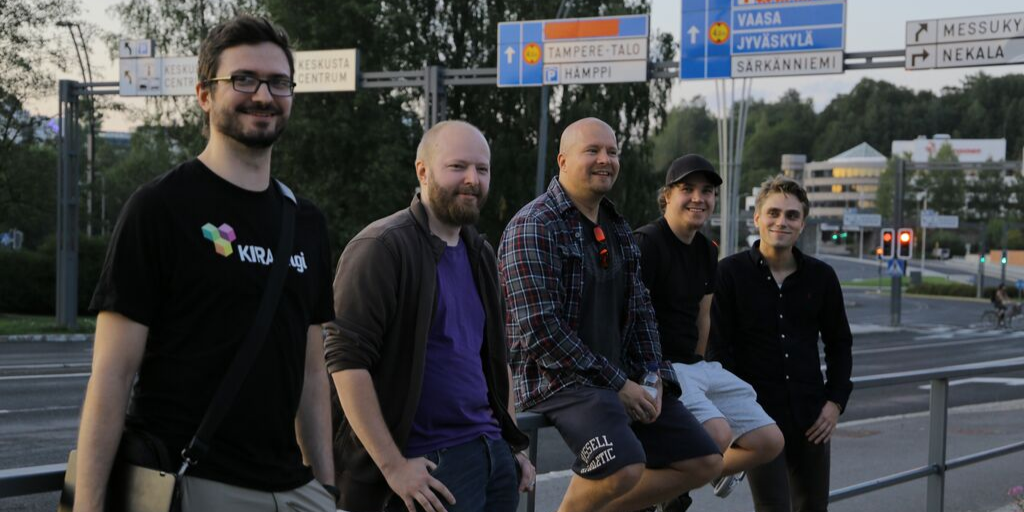The City of Tampere wants to make outdoor lighting smarter and more energy-efficient. The winners of the Enlighten Tampere hackathon, Arcventure, Geniem and Remod, combined their ideas and carried out a pilot project in the City’s IoT test area. There one can connect different sensors to the outdoor lighting control system and control the lights in a new way.
Pilot explored new ways to get more light in places where people actually move around. Anonymous traffic data from Telia and the Tampere.Finland mobile application developed by Geniem were utilized to find out locations where the most light is needed. The real-time API solution was provided by Arcventure.
In the solution, the data is filtered through the calculation and converted into a spotlight value for street lights, tells Leo Salomaa from Arcventure.
Although crowd insights service resulting from Telia’s Smart Tampere collaboration have already been utilized in areas such as urban planning and public transport planning, this was the first time traffic data has been used to control urban infrastructure.
Our data is suitable for many applications, but at the start there is no absolute certainty whether the data will add value. In this case, that happened, says Business Development Manager Tero Särkiniemi from Telia.
In addition to the traffic data, the utilization of Tampere’s 3D city model was tested in lighting control. Remod’s idea was to control the lights with a 3D model relative to the time when shadowed areas would each receive more light than bright ones. The solution would enhance the intelligence of the lighting especially at sunrise and sunset.
Arcventure’s and Remod’s solutions are a good examples of how lighting control can be enriched by combining information from different sources. The more different virtual or physical sensors can be connected to the system, the smarter the lighting.
Challenges of agile development
In August, the functionality of the controls was tested. It was discovered that the solution still needed to be refined. The lighting control system of the test area is still under development and has not previously been linked to external controls.
We actually did a pilot inside a pilot. That has brought its own challenges to implementation and schedules, says Project Manager Maarit Vehviläinen from the City of Tampere.
Much has also been learned. Piloting proved that adding new sensors to the control system is possible. It also identified what kind of challenges the so-called intelligent lights have and how those can be solved. For example, Remod found that weather information is also important in lighting control, and it is not worth using the 3D model alone. A lot has also been learned about the cooperation of several actors.
It comes to mind that we could have taken the different actors to work more closely together in temporary premises, even for a couple of days, says Hannes Junnila from Remod.
During the rest of the year, the City and the companies will ensure that external control functions within the system. The results of the pilot will also be utilized in the acquisition of the IoT platform, outdoor lighting control system and urban scene sensing, launched in the autumn.
The pilot project is part of the STARDUST and 6Cities: Future Operator Independent Data Integration Platform City IoT projects. STARDUST has received funding from the European Union Horizon 2020 Research and Innovation Program (Grant Agreement No. 774094). City IoT is a 6Cities project funded by the European Regional Development Fund.
More information
Maarit Vehviläinen
Project Manager, City of Tampere
tel. +358 50 336 7696
maarit.vehvilainen@tampere.fi
Street lights as an IoT platform

